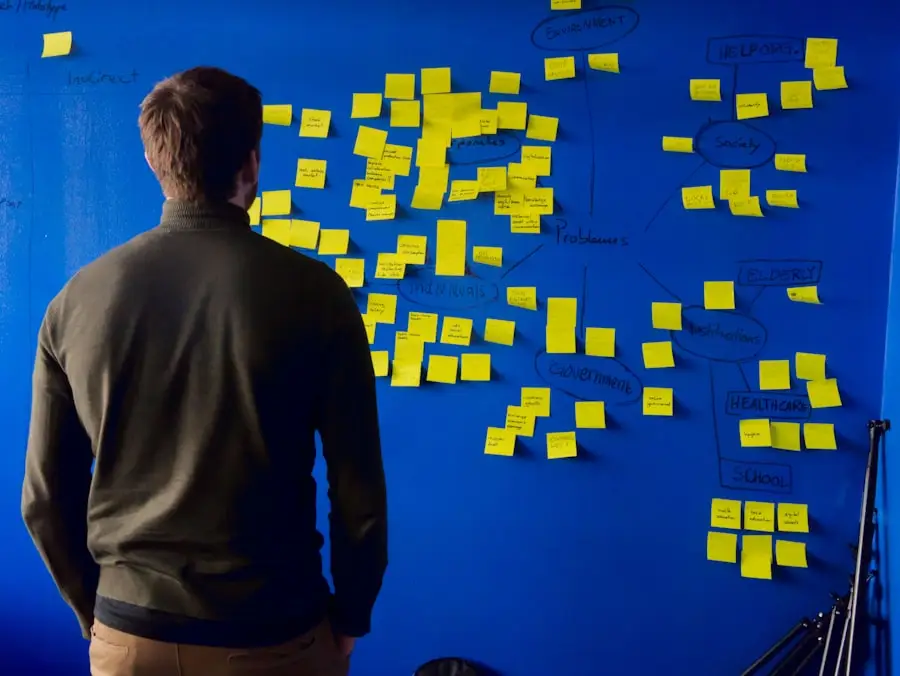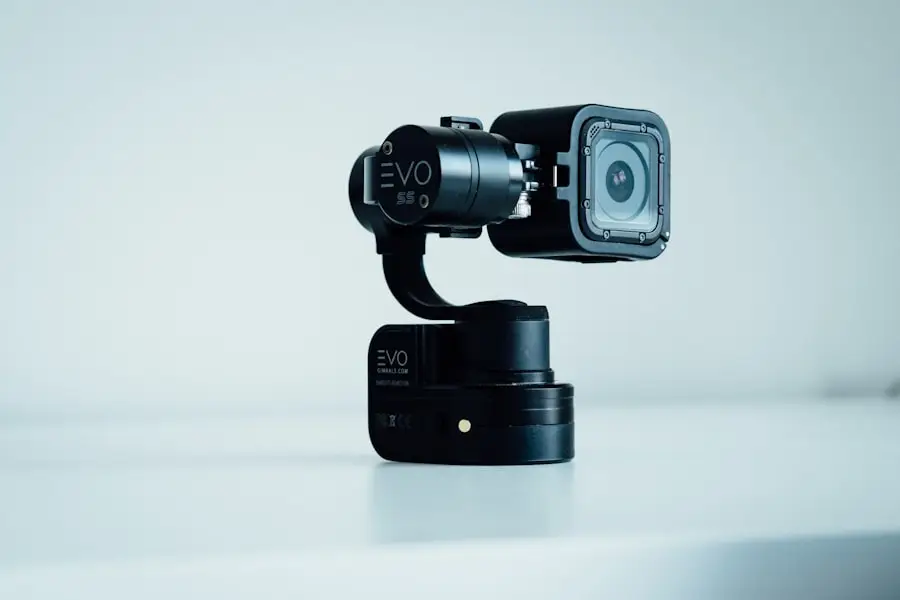Innovation and creativity are the lifeblood of any organization seeking to thrive in an ever-evolving marketplace. They serve as catalysts for growth, enabling businesses to adapt to changing consumer demands, technological advancements, and competitive pressures. In a world where stagnation can lead to obsolescence, fostering a culture that prioritizes innovative thinking is not merely beneficial; it is essential.
Companies that embrace creativity are often better positioned to identify new opportunities, streamline processes, and enhance customer experiences. For instance, Apple Inc. has consistently demonstrated how innovation can redefine entire industries, from personal computing to mobile technology, by prioritizing design and user experience.
Moreover, the significance of innovation extends beyond product development; it permeates every aspect of an organization, influencing operational efficiency, marketing strategies, and even corporate culture. Organizations that encourage creative problem-solving are more likely to cultivate a workforce that is engaged and motivated. Employees who feel empowered to think outside the box are not only more productive but also contribute to a positive workplace atmosphere.
This dynamic fosters loyalty and reduces turnover, as employees are more inclined to stay with a company that values their input and encourages their growth. The interplay between innovation and employee satisfaction creates a virtuous cycle that can propel an organization toward sustained success.
Key Takeaways
- Innovation and creativity are crucial for the success and growth of any organization.
- A supportive work environment is essential for fostering creativity and innovation among employees.
- Encouraging risk-taking and experimentation can lead to breakthrough ideas and solutions.
- Providing resources and support for innovation is necessary to help employees bring their ideas to life.
- Fostering collaboration and diversity of thought can lead to more innovative and creative solutions.
Building a Creative and Supportive Work Environment
Fostering Creativity through Collaboration
This can be achieved through regular brainstorming sessions, feedback loops, and collaborative projects that encourage team members to share their insights. For example, companies like Google have implemented “20% time,” allowing employees to dedicate a portion of their workweek to pursue personal projects that may benefit the company. This policy not only fosters creativity but also demonstrates trust in employees’ abilities to innovate.
The Importance of Physical Workspace Design
Physical workspace design also plays a crucial role in promoting creativity. Open office layouts, breakout areas, and access to natural light can stimulate collaboration and inspire new ideas. Companies such as Airbnb have embraced this concept by designing their offices to reflect their brand ethos while providing spaces for both focused work and group collaboration.
Investing in a Creative Environment
By investing in an environment that encourages interaction and creativity, organizations can significantly enhance their employees’ ability to generate innovative solutions. This, in turn, can lead to increased productivity, improved morale, and a competitive edge in the market.
Encouraging Risk-Taking and Experimentation

Risk-taking is an inherent part of the innovation process. Organizations must cultivate a mindset that views failure as a stepping stone rather than a setback. This involves creating a culture where experimentation is encouraged, and employees are motivated to explore uncharted territories without the fear of negative repercussions.
For instance, Amazon’s “fail fast” philosophy empowers teams to test new ideas quickly and learn from their outcomes, whether successful or not. This approach not only accelerates the innovation cycle but also instills resilience among employees. To further promote risk-taking, organizations can implement structured experimentation frameworks that guide teams through the process of testing new concepts.
Techniques such as design thinking or agile methodologies provide a roadmap for iterative development, allowing teams to refine their ideas based on real-world feedback. By normalizing the idea of trial and error, companies can unlock a wealth of creative potential within their workforce, leading to groundbreaking innovations that might otherwise remain undiscovered.
Providing Resources and Support for Innovation
For innovation to flourish, organizations must allocate adequate resources and support systems that facilitate creative endeavors. This includes investing in training programs that equip employees with the skills necessary for innovative thinking, such as critical thinking, problem-solving, and technical expertise. Companies like IBM have recognized the importance of continuous learning by offering extensive training programs that focus on emerging technologies and innovative practices.
By empowering employees with knowledge, organizations can enhance their capacity for innovation. In addition to training, providing access to tools and technologies that support creative processes is vital. This could range from software applications that enable collaborative brainstorming to advanced research tools that allow teams to explore new ideas thoroughly.
Furthermore, establishing dedicated innovation labs or incubators within the organization can serve as a breeding ground for new concepts. These spaces can be equipped with resources such as prototyping tools, market research databases, and mentorship opportunities, fostering an environment where creativity can thrive.
Fostering Collaboration and Diversity of Thought
Collaboration is a cornerstone of innovation, as diverse perspectives often lead to more comprehensive solutions. Organizations should actively seek to create cross-functional teams that bring together individuals from various departments and backgrounds. This diversity of thought can spark creativity by challenging conventional wisdom and encouraging out-of-the-box thinking.
For example, Procter & Gamble has successfully leveraged cross-disciplinary collaboration through its Connect + Develop program, which invites external partners to contribute ideas and innovations alongside internal teams. Moreover, fostering an inclusive culture where all voices are heard is essential for maximizing creative potential. Organizations should implement practices that ensure equitable participation in discussions and decision-making processes.
Techniques such as anonymous idea submissions or structured brainstorming sessions can help mitigate biases and encourage contributions from all employees, regardless of their position or background. By valuing diverse perspectives, organizations can cultivate a rich tapestry of ideas that drive innovation forward.
Recognizing and Rewarding Innovation and Creativity

The Power of Formal Recognition Programs
For example, 3M’s “Innovation Awards” have long been a hallmark of the company’s commitment to recognizing employees who have made significant contributions to product development efforts.
Fostering a Culture of Appreciation
In addition to formal recognition programs, organizations can foster a culture of appreciation on a day-to-day basis, reinforcing the value placed on creativity within the organization. Leaders can regularly acknowledge individual contributions during team meetings or through internal communications channels.
Creating an Environment that Inspires Innovation
By creating an environment where innovation is celebrated at all levels, organizations can inspire employees to continue pushing boundaries and exploring new possibilities.
Empowering Employees to Drive Innovation
Empowerment is crucial for fostering a culture of innovation within an organization. Employees should feel that they have the autonomy to pursue their ideas and take ownership of their projects. This can be achieved by delegating decision-making authority and providing teams with the resources they need to implement their ideas effectively.
For example, companies like Zappos have adopted holacracy—a decentralized management structure that empowers employees at all levels to take initiative and drive change within the organization. Additionally, organizations should encourage employees to set personal innovation goals aligned with the company’s objectives. By allowing individuals to define what innovation means for them within the context of their roles, organizations can tap into intrinsic motivation and foster a sense of ownership over the innovation process.
This empowerment not only enhances employee engagement but also leads to more meaningful contributions toward the organization’s overall success.
Measuring and Evaluating the Impact of Innovation and Creativity
To ensure that innovation efforts yield tangible results, organizations must establish metrics for measuring the impact of creative initiatives. This involves identifying key performance indicators (KPIs) that align with the organization’s strategic goals. Metrics could include the number of new products launched, revenue generated from innovative projects, or improvements in customer satisfaction scores resulting from creative solutions.
Regular evaluation of innovation initiatives allows organizations to assess what works and what doesn’t, enabling them to refine their strategies accordingly. Feedback mechanisms such as surveys or focus groups can provide valuable insights into employee perceptions of the innovation culture within the organization. By continuously measuring and evaluating the impact of innovation efforts, organizations can make informed decisions about resource allocation and strategic direction while ensuring that creativity remains at the forefront of their operations.
In conclusion, fostering a culture of innovation and creativity requires a multifaceted approach that encompasses various organizational elements—from building supportive environments to empowering employees and measuring outcomes effectively. By prioritizing these aspects, organizations can unlock their full creative potential and position themselves for long-term success in an increasingly competitive landscape.


